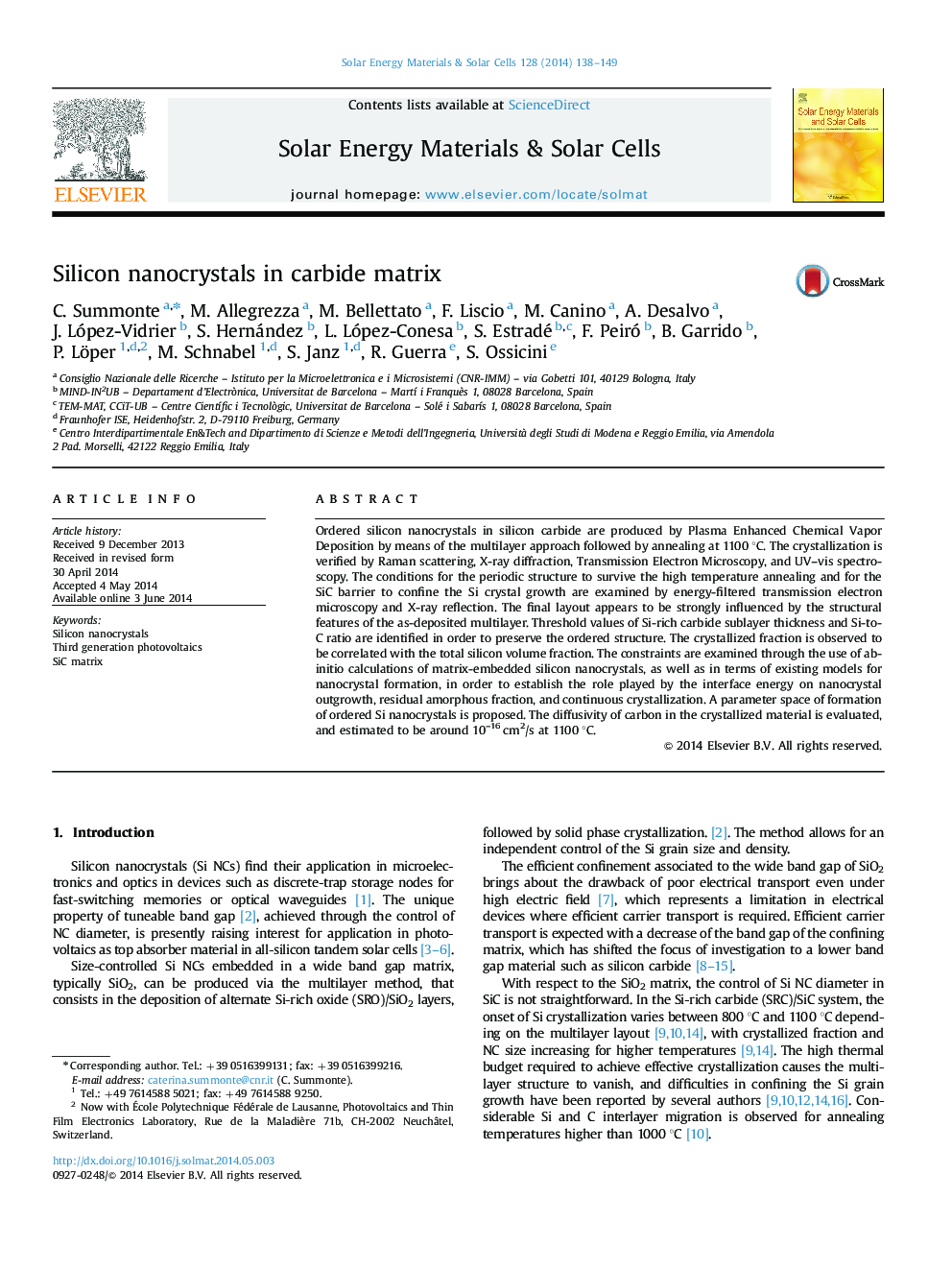| Article ID | Journal | Published Year | Pages | File Type |
|---|---|---|---|---|
| 77979 | Solar Energy Materials and Solar Cells | 2014 | 12 Pages |
•Silicon nanocrystals in microcrystallized SiC matrix are fabricated.•Space of parameter formation for size controlled nanocrystals is identified.•Physical implications are discussed.•Diffusivity of C in microcrsytallized SiC is estimated.
Ordered silicon nanocrystals in silicon carbide are produced by Plasma Enhanced Chemical Vapor Deposition by means of the multilayer approach followed by annealing at 1100 °C. The crystallization is verified by Raman scattering, X-ray diffraction, Transmission Electron Microscopy, and UV–vis spectroscopy. The conditions for the periodic structure to survive the high temperature annealing and for the SiC barrier to confine the Si crystal growth are examined by energy-filtered transmission electron microscopy and X-ray reflection. The final layout appears to be strongly influenced by the structural features of the as-deposited multilayer. Threshold values of Si-rich carbide sublayer thickness and Si-to-C ratio are identified in order to preserve the ordered structure. The crystallized fraction is observed to be correlated with the total silicon volume fraction. The constraints are examined through the use of ab-initio calculations of matrix-embedded silicon nanocrystals, as well as in terms of existing models for nanocrystal formation, in order to establish the role played by the interface energy on nanocrystal outgrowth, residual amorphous fraction, and continuous crystallization. A parameter space of formation of ordered Si nanocrystals is proposed. The diffusivity of carbon in the crystallized material is evaluated, and estimated to be around 10–16 cm2/s at 1100 °C.
Graphical abstractFigure optionsDownload full-size imageDownload as PowerPoint slide
